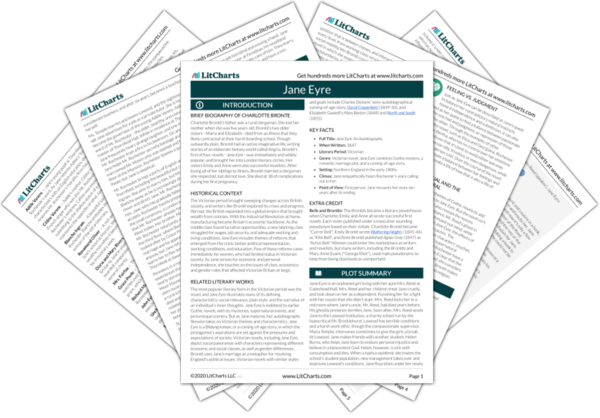Brontë uses many themes of Gothic novels to add drama and suspense to Jane Eyre. But the novel isn't just a ghost story because Brontë also reveals the reasons behind supernatural events. For instance, Mr. Reed's ghost in the red-room is a figment of Jane's stressed-out mind, while Bertha is the "demon" in Thornfield. In Jane Eyre, the effects of the supernatural matter more than the causes. The supernatural allows Brontë to explore her characters' psyches, especially Jane's inner fears. The climactic supernatural moment in the novel occurs when Jane and Rochester have a telepathic connection. In the text, Jane makes it clear that the connection was not supernatural to her. Instead, she considers that moment a mysterious spiritual connection. Brontë makes their telepathy part of her conceptions of love and religion.
The Spiritual and the Supernatural ThemeTracker

The Spiritual and the Supernatural Quotes in Jane Eyre

Unlock explanations and citation info for this and every other Jane Eyre quote.
Plus so much more...
Get LitCharts A+










